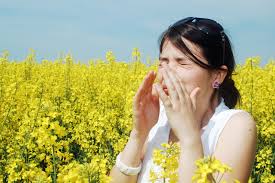How to treat your allergies at home…
I LOVE the spring. Mostly, because it means summer is around the corner. But also because I just love those happy vibes that start spreading around Toronto like some sort of positive spiritual infection. You see the overzealous Torontonians huddled up on patios at the first sign of sunshine and you may giggle, but deep down you know why they’re so anxious to park themselves in the outdoors.
We can finally emerge from our hibernation! The winter blues seem to dissipate on each of us simultaneously as we start smiling at strangers instead of grunting with our heads hung low.
It’s a glorious time, indeed.
However, spring doesn’t come without its woes. Has sneezing, itchy skin, red eyes, or a runny nose been getting you down? Do your sinuses feel “full”? Do congestion headaches get in the way of life?
Hay fever, AKA allergic rhinitis, is a condition that presents similarly to a cold but instead it’s caused by an allergic response to airborne substances, like pollen. The time of year that you experience hay fever depends on what airborne substance you are allergic to. Because your body thinks the airborne substance or “allergen” is harmful, it produces an antibody called immunoglobulin E to fight it. This triggers the release of histamine, a chemical that is responsible for those classic symptoms.
Speculated to be a result of climate change, the allergy season is starting earlier and lasting longer each year. For example, the ragweed season in the spring has lengthened up to 27 days since 1995 in North America. This means you’re at risk of struggling with these unwanted symptoms for longer periods of time.
Another seasonal issue that can contribute to allergic rhinitis is “snow mould”. This refers to mould that presents itself as the snow melts. It lives underneath the snow and above decayed organic matter, like fallen leaves, dead grass etc. and will emerge once the temperature warms.
Here are some ways you can improve your symptoms at home
– Take a shower and change your clothes if you’ve spent time working outdoors
– Use a neti pot filled with salt water to flush and drain sinuses 2-4 times daily when symptoms are present
– Make pineapple and papaya part of your daily diet to access the enzymes present in these fruits to reduce inflammation and improve breathing
– Take vitamin C as a supplement or consume foods high in Vitamin C like bell peppers, oranges, guava, papaya, kiwi, strawberries, broccoli, grapefruit, Brussels sprouts, cantaloupe daily to stabilize the allergic response and reduce symptoms
Naturopathic medicine can effectively treat seasonal allergies so that you don’t have to rely on corticosteroid nasal sprays or over-the-counter antihistamines. I would love to help you manage these pesky symptoms so that you can breathe deeply and enjoy that spring air! Book an initial appointment or a complementary 15 min consult to decide if I’m the right Naturopathic Doctor for you.


